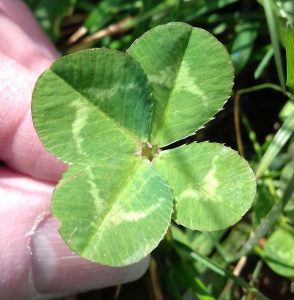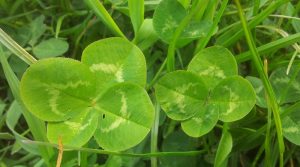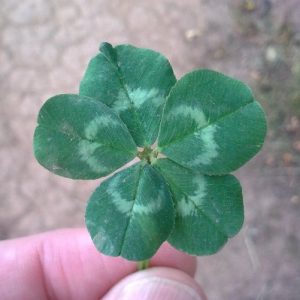Four-leaf clovers, and how to catch them (or the peculiar tale of the editor’s curse)
There are, in my experience, three ways to find a four-leaf clover.
You might try the mystical method, deploying a team of highly-trained grassland pixies to hunt for them under the light of a full moon. Nobody knows if this technique actually works.
The Monte Carlo approach will yield results, but is rather time-consuming. Named after the brute-force computational method (try every possibility until you find success), it demands the laborious sifting of candidates until the prey is finally revealed. This may be a pleasant enough way to spend a summer afternoon, especially with good company and perhaps a favoured beverage, but whether the yield per unit effort are worthwhile I will leave for you to determine.

Finally we have the editor’s curse. This demands a high initial investment, but then provides irritatingly reliable payback. A by-product of writing and editing millions of words in hundreds of magazines and newspapers is the development of an almost uncanny ability to identify unusual and misplaced objects without really trying.
Experienced editors will merely glance at a page of text, blink, and find that typos practically leap out. It’s the result of some over-developed subconscious pattern-matching algorithm, and it applies just as well to finding clover as spelling mistakes.
Sounds great huh? Be careful what you wish for. This superskill, once acquired, cannot be turned off. Road signs, shop signs, television captions, all become targets of attention whether wanted or not. Don’t even get me started on social media.
It’s a curse I tell you, a curse.

When hunting four leaf clovers, the secret is not to try. Stroll through candidate territory while thinking about something else. I cannot stress enough how important it is not to be actually looking for them – it isn’t easy, but that’s the point. It is easy if you don’t try.
Periodically, and as if by magic, you will find yourself involuntarily halting, probably backtracking a step or two, and glancing downwards. Very often you will be rewarded with your quarry.

I reliably find several mutant clovers each year through this not-trying technique, and not all of them are mere four-leafers. Five leaf clovers are more common than might be expected, and I have bagged perhaps three or four six-leafers. My personal record is a single eight-leaf clover, which on inspection appeared to be a pair of conjoined four-leaf clover twins. I have yet to find anything more polyfoliaged than that, and indeed am yet to find even a single seven-leaf example.

